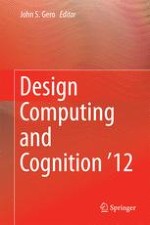2014 | OriginalPaper | Chapter
A Pilot Protocol Study on How Designers Construct Function Structures in Novel Design
Authors : Chiradeep Sen, Joshua D. Summers
Published in: Design Computing and Cognition '12
Publisher: Springer Netherlands
Activate our intelligent search to find suitable subject content or patents.
Select sections of text to find matching patents with Artificial Intelligence. powered by
Select sections of text to find additional relevant content using AI-assisted search. powered by
